Fly Girl
Ideal_Rock
- Joined
- Jan 9, 2007
- Messages
- 7,312
The red fluorescence comes from the presence of porphyrin pigments in the pearl, which fluoresce under long range UV light. Heme, the coloring agent in red blood cells, is an example of a porphyrin.
From "A Large Naturally Colored Natural Blister Pearl" by Nick Sturman
http://www.gia.edu/research-resources/news-from-research/large_natural_blister_pearl.pdf
Whilst not considered an advanced analytical test, the use of Ultra‐Violet light (UV) in gemology is widely known and can certainly have its uses when applied to pearl testing. Some pearls, especially brown and gray to black pearls from certain mollusks, are known to exhibit a weak to strong orange to red fluorescence that strongly indicates that the color is more likely to be natural owing to the concentrations of porphyrin pigment within their composition (Comfort. 1949). Pteria sterna pearls and shells of this natural color range in particular provide good examples of the range of orange to red fluorescent colors produced when they are exposed to long‐wave (LW) UV light. Pinctada margaritifera pearls and shells on the other had produce much weaker reddish reactions under LW UV light (Kiefert, Moreno, Arizmendi, Hanni and Elen. 2004).
From "A Large Naturally Colored Natural Blister Pearl" by Nick Sturman
http://www.gia.edu/research-resources/news-from-research/large_natural_blister_pearl.pdf
Whilst not considered an advanced analytical test, the use of Ultra‐Violet light (UV) in gemology is widely known and can certainly have its uses when applied to pearl testing. Some pearls, especially brown and gray to black pearls from certain mollusks, are known to exhibit a weak to strong orange to red fluorescence that strongly indicates that the color is more likely to be natural owing to the concentrations of porphyrin pigment within their composition (Comfort. 1949). Pteria sterna pearls and shells of this natural color range in particular provide good examples of the range of orange to red fluorescent colors produced when they are exposed to long‐wave (LW) UV light. Pinctada margaritifera pearls and shells on the other had produce much weaker reddish reactions under LW UV light (Kiefert, Moreno, Arizmendi, Hanni and Elen. 2004).

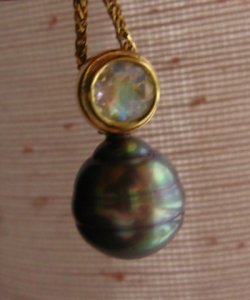
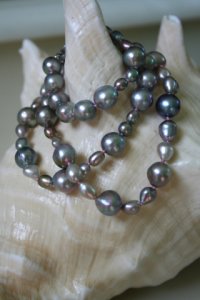





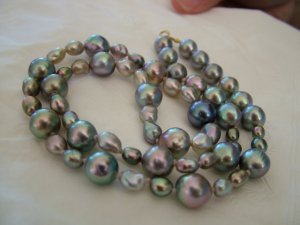
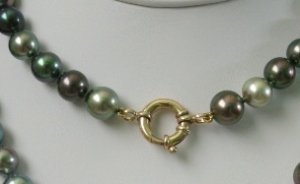

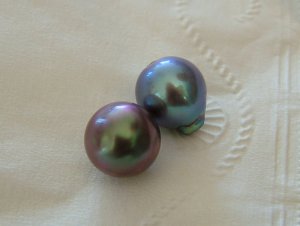


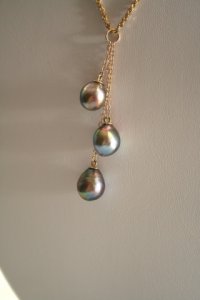

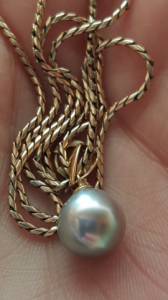




300x240.png)